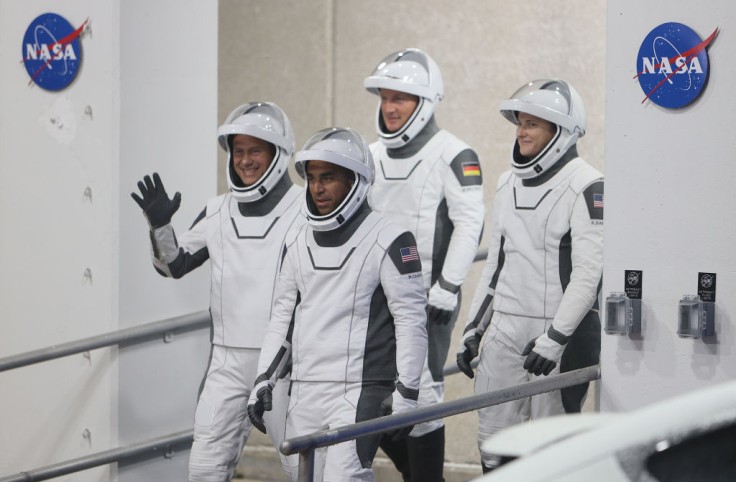
The NASA spacewalk schedule was canceled early Tuesday, Nov. 30, after NASA got an overnight warning about potentially harmful space junk.
The postponement came two weeks after a Russian anti-satellite test in low-Earth orbit resulted in a cloud of debris.
NASA Spacewalk Schedule
The seven-member crew of the space station was not advised to seek cover in their Earth-return vehicle, and no other actions were required.
However, according to CBS News, NASA said that the spacewalk was postponed "due to the lack of opportunity to properly assess the risk (the debris) could pose to the astronauts."
The post did not specify whether the debris in issue was created during the Russian anti-satellite test on Nov. 14, which produced 1,700 trackable fragments and an unknown number of smaller fragments.
The test was dubbed "reckless" by the US, and NASA advised the crew to seek cover in their Crew Dragon spacecraft as a precaution shortly after the satellite was destroyed.
NASA had completed a more extensive risk assessment by Tuesday afternoon, telling spacewalkers Thomas Marshburn and Kayla Barron to plan on carrying out the postponed mission on Thursday, Dec. 2.
"The ISS program met this morning and deemed us go for Thursday," ground control radioed. "We'll continue the planning... for Wednesday and going EVA on Thursday."
NASA Spacewalk
Marshburn, a veteran spacewalker, and Barron, a Navy submarine making her first trip into space, had planned a six-and-a-half-hour mission on Tuesday to repair a failing S-band radio antenna on the lab's power truss.
The station has a highly redundant communications system with many antennas, but management wants to repair the failing one before the lab's orbit takes it into long durations of sunlight and greater temperatures.
The NASA spacewalk would be the first since Russia's military dismantled a defunct electronic intelligence satellite two weeks earlier, causing a mass of debris to form along the spysat's orbital path.
Debris strikes pose a potentially disastrous hazard, regardless of the source, because the space station or anything else in low-Earth orbit moves at about five miles per second.
Read Also: NASA Astronaut Warning: Cracks on International Space Station Can Be Dangerous
Space Junk
The United States tracks thousands of objects the size of a softball and larger.
Ground-based Space Command radars, the station's Russian thrusters, can be used to maneuver trackable objects out of the way if they represent a collision risk.
Objects that are too small to track, on the other hand, can strike without warning.
The debris left behind by the ASAT test is slowly dissipating, and NASA officials indicated Monday, Nov. 29, that the risk to Marshburn and Barron was only about 7% higher than the average 1-in-2,700 chance of a spacesuit penetration.
Elon Musk, the founder of SpaceX, tweeted his thoughts on the subject on Tuesday.
"We had to shift some Starlink satellite orbits to reduce probability of collision. Not great, but not terrible either. Station & Dragon have micrometeorite shields (ultra high velocity impact absorption), but EVA suits do not, hence higher risk for spacewalk."
We had to shift some Starlink satellite orbits to reduce probability of collision. Not great, but not terrible either.
— Elon Musk (@elonmusk) November 30, 2021
Station & Dragon have micrometeorite shields (ultra high velocity impact absorption), but EVA suits do not, hence higher risk for spacewalk.
Dana Weigel, deputy manager of the space station program at the Johnson Space Center in Houston, said debris from the Russian ASAT test attempt was "quite concentrated" during a pre-spacewalk news briefing Monday.
For the NASA spacewalk, the shuttle-era spacesuits, also known as EMUs (extra-vehicular mobility units), are multi-layer pressure suits with backpacks that house batteries, air tanks, carbon dioxide removal chemicals, and pumps that flowing water through small tubes sewn into the astronauts' underwear.
To keep spacewalkers comfortable in sunshine or darkness, the water can be heated or cooled as needed.
All of NASA Spacewalk schedules for this whole month can be checked here.
The NASA spacewalk live stream will also be available on YouTube, in Eastern U.S. time.
Related Article: NASA Hubble Images: Online Tool Lets You Check What Space Telescope Saw During Your Birthday!









